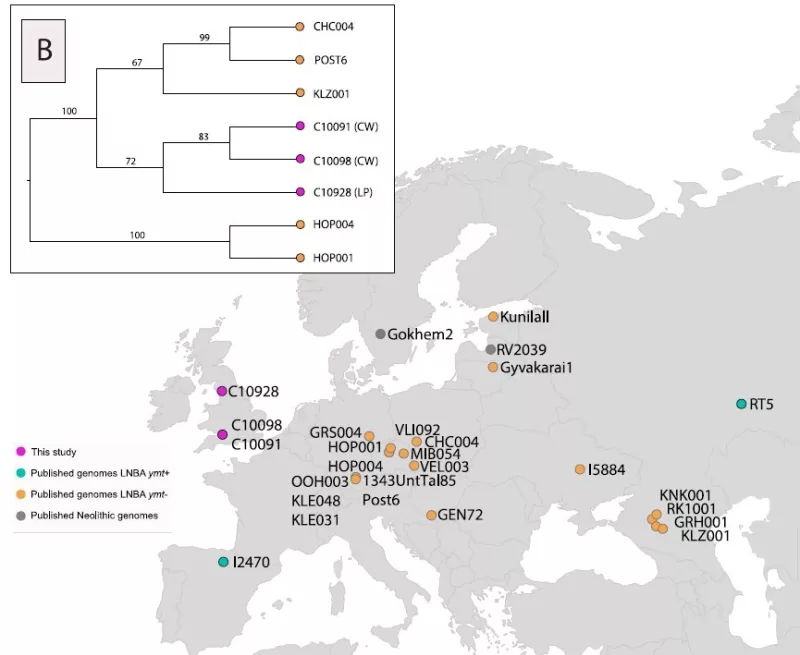A team of researchers from the Francis Crick Institute have identified the oldest cases of the plague in Britain in the skeletons of two children and one woman who lived 4,000 years ago. The Francis Crick Institute team worked with the School of Archaeology from the University of Oxford, the Levens History Group, Wells and Mendip Museum.
The two children are part of a mass burial, excavated in the 1970s at Charterhouse Warren (Somerset), while the female skeleton was found within a ring cairn in Levens, Cumbria. The Charterhouse collection was first analysed by Oxford Archaeology’s Head of Heritage Burials, Dr Louise Loe in the early 2000s. It was then that Dr Loe first recognised the potential of these skeletons to significantly contribute to understanding of Bronze Age populations in Britain. The skeletons were found by cavers in a natural shaft in the Mendip Hills, a rare burial context for the period. No osteological assessment had been done on the collection until Dr Loe started working on it. She later collaborated with Professor Rick Schulting of the University of Oxford’s School of Archaeology to further the analysis of the bones, eventually leading to the two children being included in the sample screened by the Crick Institute for the presence of Yersinia Pestis.
Following the announcement of the discovery and the publication of the article, Dr Loe said “I always knew, since I first encountered the collection in the early 2000s, that the Charterhouse skeletons have a unique story to tell about our past, but this discovery is completely unexpected”.
The bacteria that cause the plague has been identified in human remains from Eurasia between 5,000 and 2,500years before present (BP). This is the first time that the bacteria have been found in Britain. The discovery at this Beaker period/ Early Bronze Age site could, in future, shed light on the dynamics and impact of the spread of the Beaker culture into Britain which coincided with the movement of people.
Image: Map showing the distribution of LNBA and Neolithic Yersinia pestis strains. Points in purple show genomes newly sequenced in this study. Credit: Pooja Swali from the Crick Institute (2023), Nature Communications.

